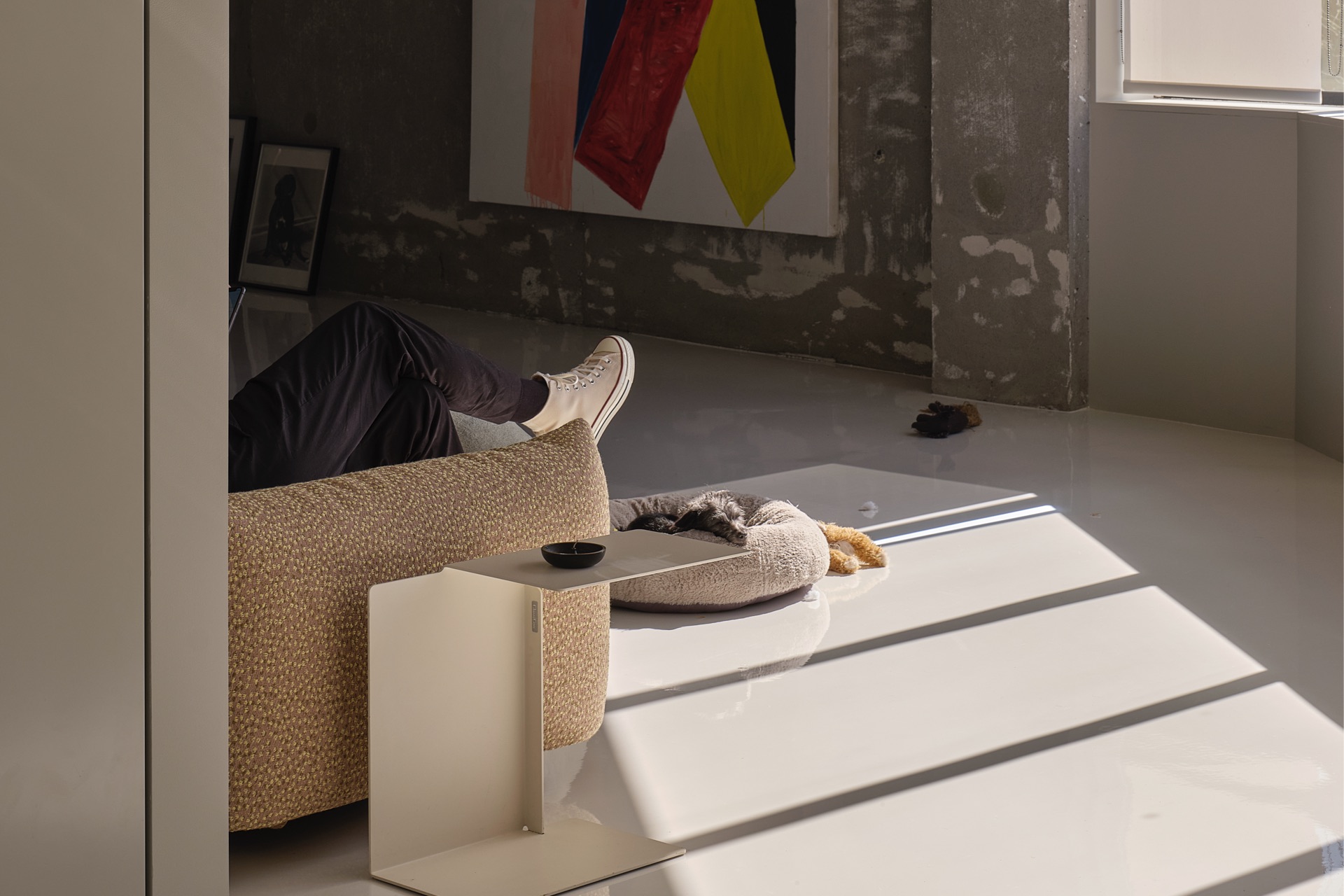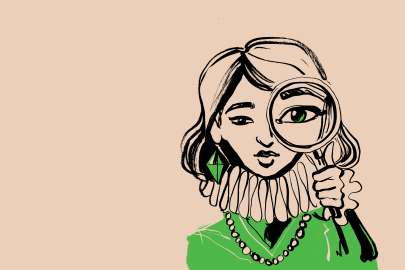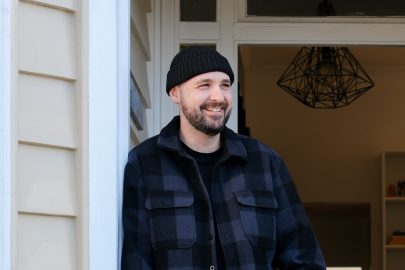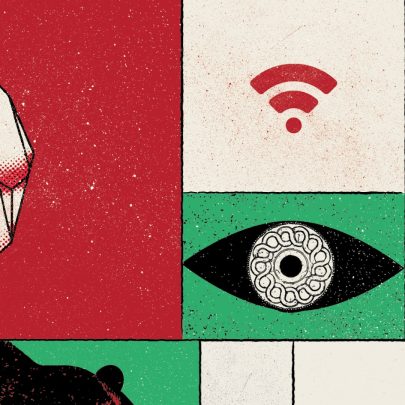Jan 16, 2024 Art
To those not travelling in the inner circles of the Auckland art world, when Michael Lett opened his eponymous gallery 20 years ago, he appeared to emerge into the world fully formed, as if he’d been born in an immaculate suit, a crisp white shirt and Margiela sneakers. As soon as you heard anything about Lett, you heard the rumours — he had been collecting contemporary art since he was a teenager (true); he was the son of renowned gallerist Barry Lett (false); he’d left Gow Langsford and taken Michael Parekōwhai, one of the gallery’s most exciting and profitable young artists, with him (true).
He had a ready-made aura of success. I remember him whirling through a group exhibition at Special Gallery, an artist-run space in pre-development Britomart, seemingly buying everything still for sale. It was polarising. People seemed either elated that this serious commercial gallerist was patronising the small, makeshift gallery catered with cans of VB, or annoyed that the same serious commercial dealer was buying up (or speculating on) a bunch of work at a show priced to sell to the friends and contemporaries of the artists, mostly art students and K Rd dropouts.
A year or so later, Lett started working with Simon Denny, one of the artists behind Special. Lett took him out to fancy dinners and bought him new clothes. Although Lett was only a few years older than Denny, he was already operating on another level, one of glamour, of extravagance, of confidence. “Michael is really, really good at doing something that is really, really hard to do — making something feel special and important,” Denny tells me over the phone from San Francisco, where he’s exhibiting at the Altman Siegel gallery.
“With art, that’s so important, because there’s a lot of faith involved in the value that is claimed and the whole environment around it. When I first showed a work with Michael, as a recent graduate, in the back office of his first gallery on K Rd, just having it in there made me feel like my work was worth something, and was taken seriously in a way that, even at art school, I didn’t feel. He’s able to produce an atmosphere of value in this incredible way.”
Lett’s relationship to art — selling it, buying it, finding it, collecting it, living with it — can be summed up by two words he uses frequently when talking about it: ‘magic’ and ‘value’. “I really hate it when artists under-value their work,” he tells me, quietly but emphatically in the upstairs office at his gallery) in a renovated bank on the corner of Karangahape Rd and East St, just a couple of blocks away from where he first started. “What artists do has value.”
Despite this talk of ‘value’ and ‘saleability’, Lett still seems earnestly in awe of the magic and mystery of art. You can hear it in his voice, when he talks about the artists he works with (although, for the most part, he avoids mentioning them by name so as to avoid omitting the others) and the work they make. “The interesting thing in what we do is that 99% of what we sell is unique — there’s only one. That’s part of the mystery. You walk into a gallery like ours and this thing you’re going to buy, it’s the only one like it. I keep saying ‘magic’, but it is — it’s a little bit magical.”
That mystery and magic inform the way he runs his business. He is, according to the artists I talked to who work with him, largely unconcerned about trivialities like cost or budget or technical difficulty — he just cares about artists making the best work they can. Everything will flow from there. “It’s not wasteful, ‘Just spend as much money as you can’,” says Denny. “He takes something and makes it special; he adds value to everything he touches. I make a lot of shows, with a lot of people, in a lot of different parts of the world, and when I do a show with Michael, it’s always perfect. Because he cares as much as I do and he delivers in a way that’s special.”
If Lett admits to having a key talent, it has nothing to do with money, and everything to do with his ability to attract “far smarter” people to his side and go from there. “I’m honestly not a very good business person,” Lett says. “I’m always aware to a certain degree how things are going, but I live in a fantasy world. I’ve caught myself many times telling my partner, ‘That is so cheap’, and he’s like, ‘It’s $50,000’. I’m always thinking about money but it doesn’t consume me.
“I sell work so we can help the artist make more work. I did not open a gallery to make money. If I did, I think it’d be a very different gallery. That being said, I want all the artists I work with to be really successful. There’s critical success — which I think all the artists I work with have — and that is hand in hand with economic success. That allows us as a gallery to do more, whatever that happens to be. We publish, we take artists to fairs, we assist in the production of work in a way that many galleries of our stature in New Zealand don’t really do. I say that with all due respect to everyone else in the industry — we all do it however we want to do it. But ours is also a modest operation. A lot of smoke and mirrors.”
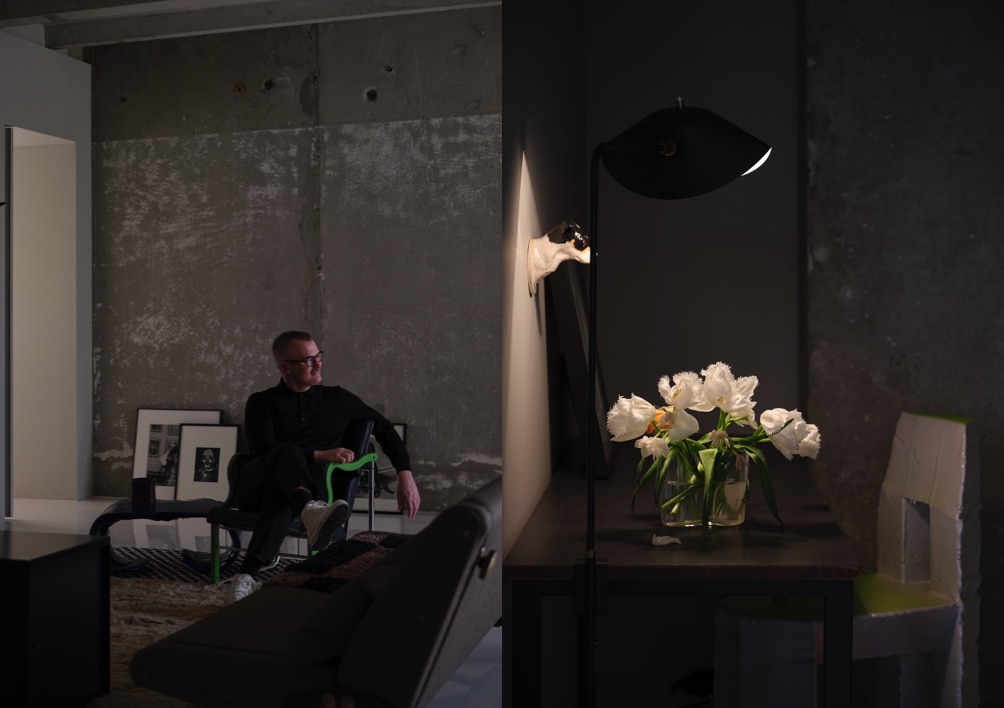
Michael Lett at Home
Michael Lett was born in Takapuna in 1977. His father left when he was young, and when he was five his mother, single with two kids, moved to Whangaparāoa, where, through her Baptist church connections, the family lived in baches while the owners weren’t using them. He describes his early life as a “good Christian upbringing, albeit with a flaming homosexual son”, though his family “never told me I’m going to burn in hell, so I guess that’s a win”.
Lett attended Orewa College, taking electives in art and film studies, with a teacher who’d prove to be a formative influence. “He would have seen me for who I was and am,” he says. “I don’t want to get him into trouble, but I look back and he basically created a whole curriculum for me. Suddenly film studies was all Desperate Remedies and Derek Jarman Super 8 films. He was very kind and made sure that I stayed at school. There was a moment he sat me down and forbade me to go. He said, ‘I’m not letting you leave school’. And I stayed.”
One weekend in the city, Lett ran into that film studies teacher, who took him gallery-hopping to RKS Art (formerly the Barry Lett Galleries), Judith Anderson and a couple of others he can’t remember. “It was a whole new world,” Lett remembers. “He knew all the people who worked there. He helped me get a job for the day at Judith Anderson Gallery for work experience. I literally just sat there for the entire day drinking cups of tea, annoying her with questions.”
Lett started bussing into the city to walk around the galleries, seeing as many shows as he could, asking questions, collecting price lists. Aged 16, he bought his first work — a painting by John Reynolds for $600. “I had huge arguments with my parents,” he says, “but they were arguments about how I could decorate my room, or I had bought artwork and they were upset about it.”
After high school, he went to the University of Auckland to study film and English and art history. He’d given up on the idea of becoming an artist when he realised how far the work he could make himself was from the work he admired, but started working at galleries part-time during the day and in restaurants at night. He worked for Anna Bibby for six weeks, selling a Peter Robinson work on his first day. While working as an attendant at Auckland Art Gallery, he was befriended by the curator Ron Brownson. One day Brownson invited Lett to come to the markets on Sunday. Brownson picked Lett up from his Queen St flat. “You know you’re living in Barry Lett’s old gallery?” Brownson asked him.
“I just loved all those connections,” Lett recalls, decades later. “Barry Lett and I both worked with Jim Allen, who died last year, so that was a nice connection as well.”
Lett also worked for the dealer Sue Crockford for a couple of years, and remembers reading her copy of The Art Dealers by Laura de Coppet and Alan Jones several times, cover to cover. (He especially loved the chapter on Leo Costelli, who, he says, opened his gallery as a way to fuel his collection.) When eventually Auckland Art Gallery offered him a six-month full-time job to cover a busy time with a marquee Goldie exhibition, he “took a break” from university — and never returned. “I remember sitting down in a cafe with Chris Saines, who was the director of the Auckland Art Gallery, and telling him, in my early 20s, that he was going to buy work from me. And he did!” At the end of the six months, Gow Langsford Gallery, owned by co-directors John Gow and Gary Langsford, offered him a job. “I was at the front desk, and people would come in with their CVs and hand them to me, and I realised that I was already there. By that point, I knew that’s what I wanted to do — I wanted to open a gallery.”
Lett formed an especially close relationship with Langsford and thought of him as a father figure during his three years at the gallery, as he worked his way up from the desk to liaising closely with some of the biggest artists in New Zealand, including Michael Parekōwhai, who would leave the gallery with Lett in 2002, and Shane Cotton, who would join Lett in 2009 (though he returned to Gow Langsford in 2021).
“I was a bit young and naive,” Lett says. “No regrets at all, but I was naive about the right way of starting a gallery under the circumstances I was in. I had said to Gary many times that I wanted to open up a gallery, and I recall even going to spaces with him and talking about it, and he was very encouraging. I was having a rough time there as well. Ultimately, I was asked to leave, and I did.
“Weirdly, that was the push that was required. If I had just been brought into the office that day and reprimanded, I don’t think I’d be where I am now. At that point — as one does when they’re 25 — I had this weird confidence that it wasn’t going to crash and burn. Michael Parekōwhai, who I had become friendly with, left Gow Langsford that day, too, later turning to me and saying, ‘I’ve got you’. He said, ‘With me, you won’t fail’.
“These are the sorts of things you don’t realise how special they are at the time. I would have been a bit arrogant, and I wish I could change that. I had a credit card, I had some cash I’d been accruing from some commissions, and it just felt possible. I wasn’t fearful. I absolutely would be now.”
Together, Lett and Parekōwhai were the perfect pair. Lett had three years’ experience selling at New Zealand’s leading contemporary art gallery, and Parekōwhai made important, critically acclaimed art that commanded ever-increasing prices. In January 2003, they formed the aptly named Art Union Limited company; then, two months later, it was replaced by Michael Lett Gallery Limited. “The common thread between those guys starting off is, ‘We do it right’,” says Denny. (Parekōwhai taught Denny at Elam, and Denny credits his tutor for introducing his work to Lett.) “You do the best thing and then you find the client. You don’t do the half thing, you do the big thing. Michael does that for the gallery, he does that for his artists, and he does that for himself. It’s an incredible, beautiful, contagious thing.”
Lett felt like there was a whole slew of artists who didn’t have representation and should. Steve Carr, for instance, whose exhibition Dive was the gallery’s first show, opening on 1 April 2003. In an early hint of Lett’s later-to-be-global ambitions, Hany Armanious, the Egyptian artist who’d go on to represent Australia at the Venice Biennale in 2011, had the second. But it wasn’t just artists without galleries whom Lett took interest in. From the early days of the gallery, he supported artists who showed with others and who weren’t (yet) part of his roster. “He showed an interest and supported me through many projects while not representing me,” says Kate Newby, who turned Lett down early in her career, according to Lett (Newby herself doesn’t remember this), then joined him some years later.
“When I was pouring a concrete floor out the back of [artist-run gallery] Gambia Castle on K Rd, he paid for that. He bought some of my very first works. He supported me from the minute I left art school and didn’t really seem to ask for a lot in return. He seemed to want to support me because he wanted to see my work in the world, and that wasn’t contingent on him representing me, which is pretty fucking amazing. So when we did start working together, we had a strong foundation of trust. I guess that’s good business!”
“I wanted to work differently,” Lett says, explaining that his initial idea was to work with artists on an exhibition-by-exhibition basis, although he soon learnt that both sides of the relationship benefited from the stability of longer-term engagement. “I had this feeling that artists were just making work, dropping it off at the gallery, and then leaving and hoping for the best. Galleries weren’t necessarily interested in working with artists, they were just working with the stuff. I wanted to be different.”
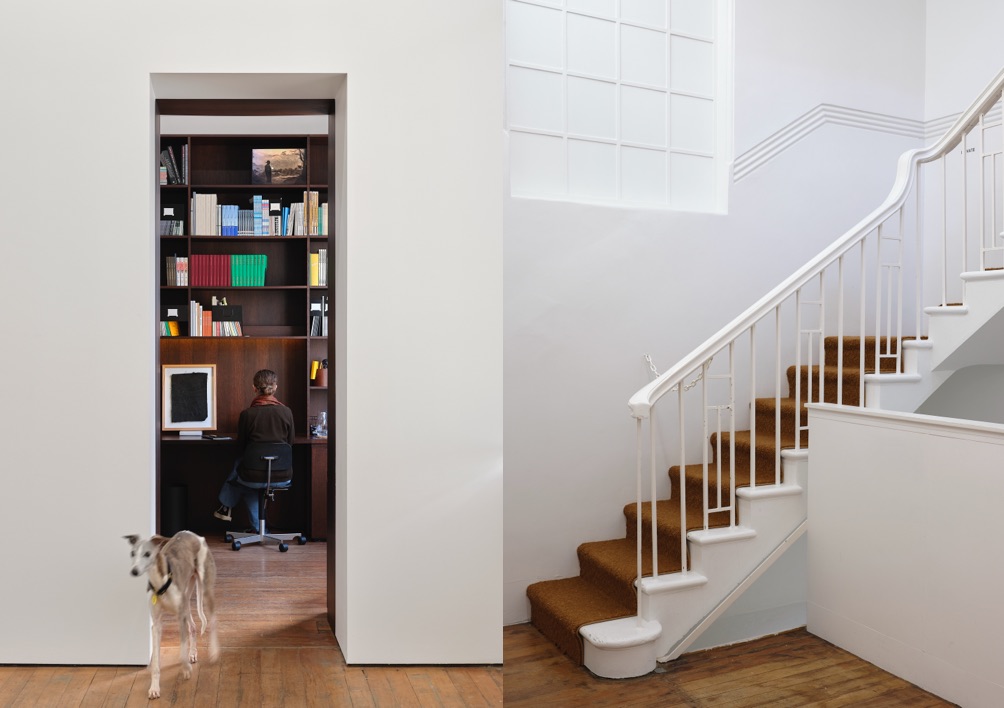
Michael Lett Gallery
Michael Lett, the gallery, has changed a lot during the 20 years it’s been in business. From its first space on the corner of Karangahape Rd and Edinburgh St, in 2011 it moved to a huge below-street-level automotive workshop just past the car-yard strip of Great North Rd. The multi-roomed space allowed for more, and more ambitious, exhibitions. While on Great North Rd, Andrew Thomas, who’d joined the gallery in 2010, approached Lett about buying into the business, becoming Lett’s business partner and co-director. “I still think about how much trust this must have involved on Michael’s part,” says Thomas, “to share a part of something so personal.”
In 2014, Lett, a sharp-eyed real-estate magpie, saw an opportunity to move back to K Rd, to an historic ANZ Bank building on the corner of Karangahape Rd and East St. The building has three floors with rooms of varying sizes, perfect for showing all kinds of work at different scale. The ground floor is the main exhibition space, light and airy; downstairs in the former vaults is a maze of cool-brick, bunker-like rooms and corridors, perfect for less-conventional exhibition making; upstairs is a sunny library/office, where Lett and I talked for hours one fine morning. Then, last year, the gallery opened its East St annex, just next door, in the former Methodist Mission Hall.
“With East St, he’s giving artists a real chance to stretch out,” says Newby, who opened her exhibition Had us running with you in the East St space last February. For this, Newby replaced the windows of an entire side of the hall with hand-made versions with holes in them — all during a historic weather event. “It can be so tedious working with museums and institutions — there’s so much red tape — so getting to make an almost institution-sized show, in a hall, with the support of a gallery… What a breath of fresh air for artists to turn up the volume and try new things.”
“I think about how impoverished the art world would be had Michael’s programmes not existed,” says Sarah Hopkinson, who runs Coastal Signs, an experimental co-operative/commercial gallery. Hopkinson worked at Michael Lett from 2008 to 2011. “When people come to the city, they ask you what they should see and you can tell them to go to this corner of K Rd where you can see three really great shows. And even if I don’t think all the exhibitions are good, they’re serious exhibitions by serious artists, and it’s regular. Take that out of the equation and it’s pretty fucking grim.”
For Lett, having a gallery is not just about giving people a place to show their work, it’s about creating spaces, creating opportunities for artists to exhibit, and creating new and unique art experiences for the public (and, yes, the buyers too). “While I’m definitely not an artist, I do feel that having a business like this is extremely creative,” Lett says. “It’s the closest I have to an arts practice. Everything feels quite personal.
“Most of the people we work with are long-term clients of the gallery. Things will come in from an artist’s studio and I will absolutely have a strong idea about a work going to a certain person. I remember calling up [Wellington-based collectors] Jim and Mary Barr one day and describing a work over the phone, and they were like, ‘We’ll take it’. That is fun, when people trust you.”
“I always get the sense he loves what he’s presenting,” says Denny. “That’s just in him. He’s able to treat something that is very ephemeral with the same revere as something that looks very glitzy. And he makes you believe it, too. A beautiful, polished sculpture by Michael Parekōwhai next to a very modest piece of clay, glazed in an odd way and displayed under a roof by Kate Newby. It’s treated with the same reverence. It feels so deep.”
The tension between the glitzy and the modest has a particular charge in the art world. It’s hard to think of another social context in which the broke and the wealthy exist so closely — in a type of symbiotic codependence — and where it can sometimes be difficult to tell the difference between the two. Those rich in cultural capital intermix with those with financial advantages. “Michael always thinks that people are cooler than him, but he compares himself to people from dynasties,” says Hopkinson. “Who come from these old-money European aristocracies and they have these fabulous lives because there was never any other option. Whereas Michael comes from a working-class family in Ōrewa, which is a way cooler and more impressive story than ‘Inheriting a bunch of money and taste and furniture from my parents’.”
Certainly, Lett’s own family dynasty is more hardscrabble than moneyed. Over a duck risotto at Onslow , Lett tells a story about being in Dunedin and seeing his father for the first time in decades. “It was probably 16 years since I had spoken to him, and he offered to take me to the airport in his cab. It’s painfully long, that journey from Dunedin to the airport, but I thought, ‘I haven’t seen him in a very long time’. Try to be that person, reconciliation — all that stuff. When we arrived at the airport I noticed that he had put the meter on. I hadn’t seen him in 16 years and he had the meter on! And as I got ready to hop out of the car, I said, ‘How much do I owe you?’ And he said, ‘Oh gosh, let’s just make it $80. Friends and family!’”
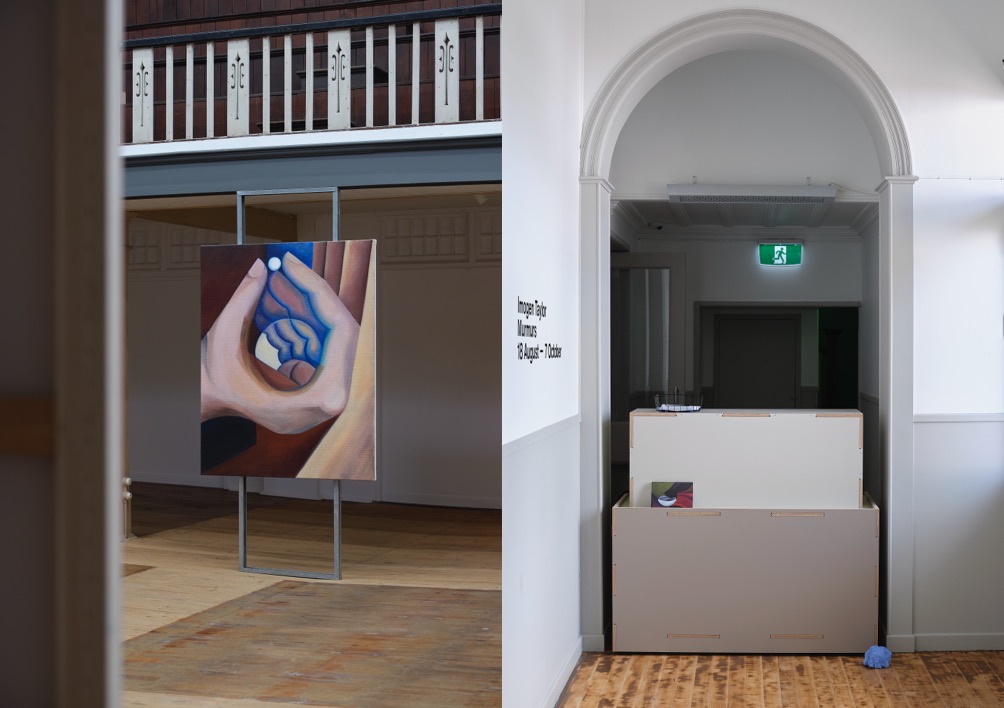
Michael Lett Gallery (3 East St)
Before we’d headed to lunch, I had visited Lett at the recently renovated apartment he shares with his partner, composer Sam Holloway. I was instantly reminded of Janet Malcolm’s description, in a famous essay from 1986, of the art critic Rosalind Krauss’s New York loft: “Perhaps even stronger than the room’s aura of commanding originality is its sense of absences, its evocation of all the things that have been excluded, have been found wanting, have failed to capture the interest of Rosalind Krauss — which are most of the things in the world, the things of ‘good taste’ and fashion and consumerism, the things we see in stores and in one another’s houses. No one can leave this loft without feeling a little rebuked: one’s own house suddenly seems cluttered, inchoate, banal.”
Lett and Holloway’s apartment — the entire floor of a building on Whitaker Place, which until recently was a five-bedroom student flat — achieves something similar. With the help of Cheshire Architects and interior designer Katie Lockhart, the old rooms were ripped out and the whole space rethought — not as a giant loft, as some might expect of expect (and in the tradition of affluent artistic residences), but as a circular labyrinth of small rooms, nooks, corners and crevices. Though the couple has a small dog, which adds a certain livewire chaos to the mix, the house looks like it has never even seen a child. It looks as though it never needs cleaning because, there, the concept of mess simply does not exist.
During the work on this story, whenever I talk to anyone who knows Lett personally, they always mention the houses he has lived in — usually significantly renovated apartments full of colour and bold, confident design — a stark contrast to the national obsession with blank slates designed for market acceptability. “If he hadn’t become a gallerist, he would have been the best interior designer this country, potentially this region, had ever known,” says Hopkinson. “He has an amazing way of creating spaces and has always sought out alternative ways to live. I’ve always admired that.”
“Part of what’s amazing about him is his own standards he sets for himself,” says Denny. “His own personal choices — what he has around him, who he’s speaking with, all of that feels special. The curation of his own life. And that’s part of what you believe in. Nothing is crap — it’s all amazing. So when he tells you something’s amazing, you can feel it, you believe it.”
The apartment seems both filled with art and yet, for the home of an art dealer and collector, restrained in its presentation. In the main living room (all raw concrete and sunlight), there are a couple of large works on the walls that will bear them, with smaller works half-hidden around corners and nooks. Lett has a black-and-white photo Julian Dashper gave him for his 21st birthday, and a large Derek Jarman sculptural painting with a small bible covered in tar and flowers taken from his garden in Dungeness (the subject of Jarman’s book Modern Nature, which is now perhaps the artist and filmmaker’s best-known legacy). In the kitchen and dining area, there’s a Parekōwhai sculpture work (a Christmas present to Lett in 2003), a painting called Gathering Faggots by the 1950s New Zealand painter William James Reed, which Lett recently bought at auction, partly because of its name, and a calmingly geometric Richard Tuttle.
But the recurring feature of the house is its abundance of photography, predominantly black and white. Dotted around, or leaning up against the walls, are works by Robert Mapplethorpe, Larry Clark, Peter Hujar, Alvin Belthorp; Nan Goldin’s Heart-shaped Bruise NYC; an Andy Warhol photograph of his boyfriend having dinner at Mr Chow; and a Joel-Peter Witken photograph Lett proactively acquired from Peter McLeavy’s estate before the legendary Wellington gallerist’s collection was auctioned abroad.
Lett has always been a collector — of stamps, postcards, Pokémon cards. He used to keep a scrapbook. As is common among people who grew up with little, Lett finds security in things. He says his dream job would be to be a full-time collector — he admires those who are artists themselves, he says, but just happen not to make artworks. While Lett’s not pedantic about keeping everything he’s bought — he’s sold work to fund new purchases, and donated work to institutions like the Hocken Collections in Dunedin and the Dowse Art Museum in Lower Hutt — he finds that works don’t always truly make sense to you when you buy them, but will reveal themselves over time.
“The best collections are the ones where people don’t have a million dollars, but have bought things over a long period of time,” he says. “For me, maybe at some point of my life I’ll be like, ‘Oh yeah, now it makes sense. Thank goodness I bought that work 30 years ago and put it aside.’ The work of Michael Parekōwhai’s I have hanging in my kitchen, he and his wife Marie-Janna gave that to me 20 years ago. I’ve cared and loved it all this time, but this year is the first time I’ve put it on the wall.
“There are moments in time that just fall into place, and it’s the time for that work.”
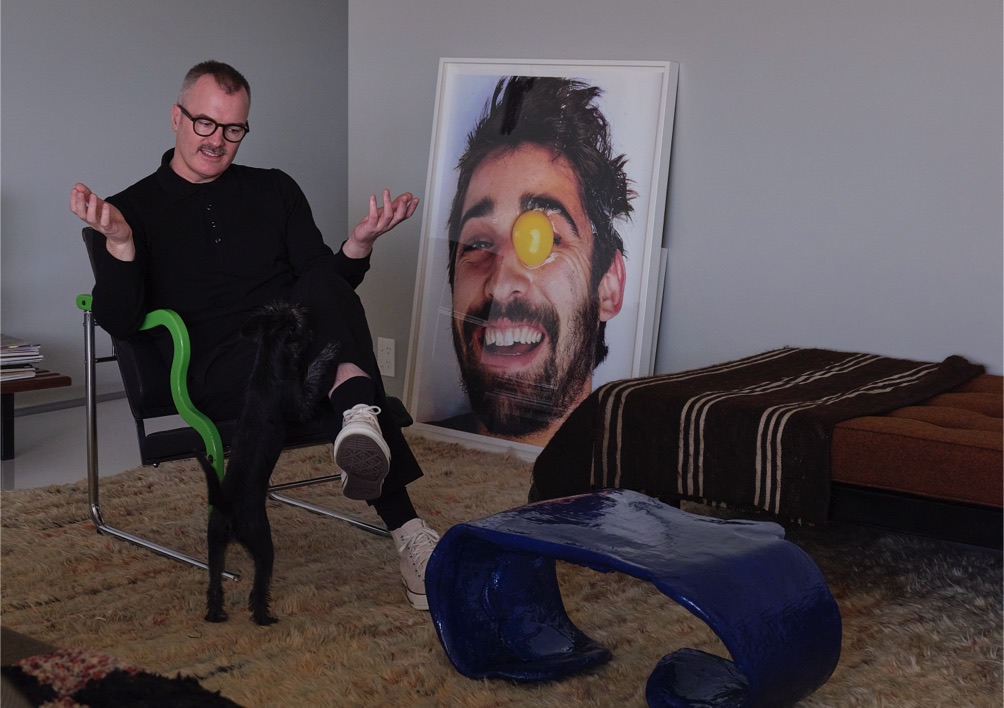
At home.
If Lett’s affinity for the work of gay artists is tangibly obvious on the walls of his home, over the past two decades he has also played an active role in Auckland’s queer community. Lett came out of his time on the board of Auckland Pride — for which he was secretary for a little over three years — somewhat bruised. During his tenure, the organisation split at the seams in a largely generational fight, in 2018, over whether police and corrections officers should be able to march in the Pride Parade. The debate pitted largely older, affluent gay men against younger, politically radical members who identified more with the contemporary, intersectional politics of the LGBTQI+ community. The board ultimately decided to ban uniformed police officers from the parade — a sensible compromise to some; a capitulation to the radical faction for others; and a disrespectful abandonment of years spent working towards mainstream acceptance for a third group.
Lett was largely seen as a moderating force in the conflict, but only two years later he was compelled to resign from the board, after an exhibition at the art gallery Mercy Pictures. The provocative show included, among a variety of flags painted on small canvases, swastikas and white power flags hung across from tino rangatiratanga and Ngāi Tūhoe flags. Lett was photographed at the opening of the exhibition and the image was subsequently posted on Instagram. From there, Lett became a focal point of the controversy, first for attending, then for not apologising sufficiently for his presence. He took part in a town hall meeting on Zoom, at which he listened to the hurt and anger of many in the queer community. He resigned from the Pride board the next day, with an explanation and apology posted to the organisation’s website.
“I still have a complicated relationship to my time on the Pride board,” Lett says. “I feel like I learned a lot. I felt like I listened and spent a lot of time in spaces that I wouldn’t necessarily have found myself in ordinarily. I surprised myself. Even though I felt at times worldly and wise — I’ll say that tongue in cheek — I had lived quite a sheltered existence. My reflection is that when you spend time listening to people, you can’t unlisten, you can’t unhear what has been said, and you then have to make some decisions about what you’re going to do. Are you going to ignore that conversation or are you going to try to do something about it? Change is painful. It can be very fast or it can be very slow.”
Lett never saw himself as a person standing against the tides of progress or as a gatekeeper — “until I was accused of being one a few years ago, in a way that made me think about it very differently. I’d never thought of myself as holding back other people. But you don’t even need to be clear to take a position. To not make a decision is to take a position. We’re all in this boat. You’re in this boat, too. You think to yourself, ‘How did you end up making those decisions?’ And you stand by them. I’m not about to close the gallery any time soon, so hopefully I have another 20 or so years to deal with some of these things.”
The idea behind writing about Michael Lett was to take stock of the gallery that bears his name and to ask him how the art world has changed in the two decades he’s been running it. When I do, Lett demurs. “I don’t think you can stand on the precipice of 20 years and really see that much. For me it’ll be a longer timeline.” The growing but belated attention to LGBTQI+ artists among the country’s art institutions is one of the things on this too-long timeframe. “The fact is, I’m still waiting for just one of our public institutions in this country to make the show that discusses queer stories in New Zealand. It’ll come. It’s slow, too slow.
One arena that Lett seems particularly well placed to assess is the global footprint of New Zealand artists, including those he works with. While not the first, Lett was perhaps the most active local gallery working globally during the high-flying art fair scene that exploded in the early 2000s and stayed vibrant until Covid, the ramifications of which are still being felt. “It absolutely feels like more and more artists from this part of the world are participating in the global way, whether it’s Emma McIntyre showing with David Zwirner, or Kate Newby making a project at Mori Art Museum, or Simon Denny literally everywhere. Many artists — Judy Millar, Francis Upritchard, it goes on and on. I often say to people that when I first met Julian Dashper, he was paying to put his own ad, as a work, in the pages of Artforum. And now, there are moments when you open up a magazine like that — which is a reflection on the art world according to North America — and it’s got three or four things that directly relate to New Zealand. It’s quite extraordinary. That is a major change. The fact that so many artists are living outside of New Zealand, and working outside of New Zealand, working with really interesting galleries.”
These days, Michael Lett is on cordial terms again with Gow (who called Lett “ruthless” in a 2010 Sunday Star-Times article) and Langsford, but his original sin may never be forgiven. Or forgotten. Some galleries may still grimace a little when he buys work by one of their artists (could that be the kind of support that sees them leaving for Michael Lett when the time is right?). Others in the art scene are happy to call Lett polarising, but when pushed, struggle to come up with examples other than Gow Langsford or the fallout from the Mercy Pictures controversy. Perhaps they see him as too influential, too central in such a small world, to talk shit about to someone with a dictaphone? Or maybe he’s just softened a little with age, been humbled a little with experience, been centred by his success.
A gallerist is a facilitator, a curator and a connector. Not just of artists to money (though hopefully plenty of that), but of artists to an audience, and to each other. Gallerists create spaces where people can experience the world (only a tiny fraction of the visitors to a commercial gallery ever buy anything). And finally, ideally, their presence doesn’t just shuffle art from one hand and money to another, but creates a climate where more art, more artists, more galleries are possible. As Hopkinson told me, “It’s all additive.” Added value, and a belief in magic.

